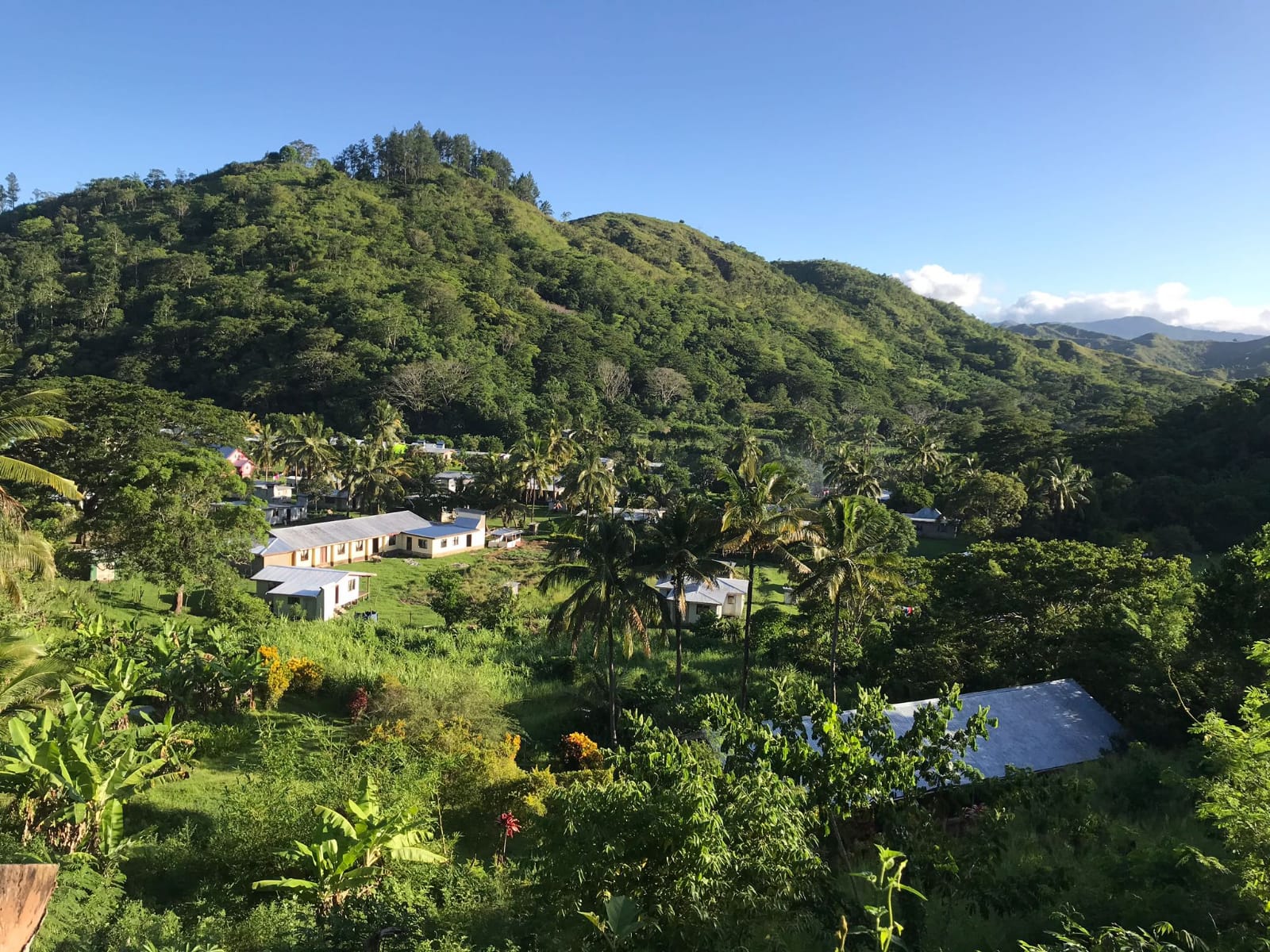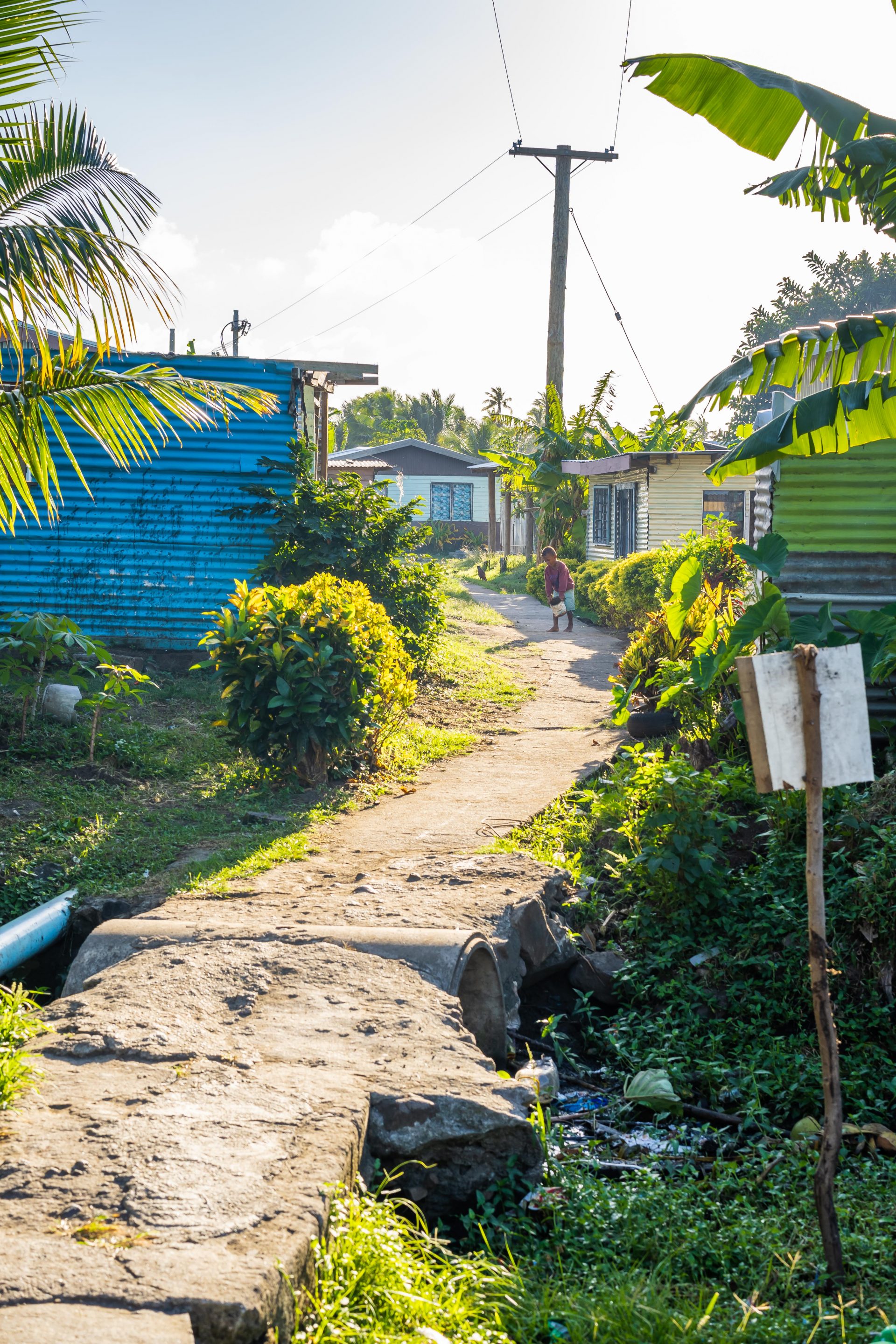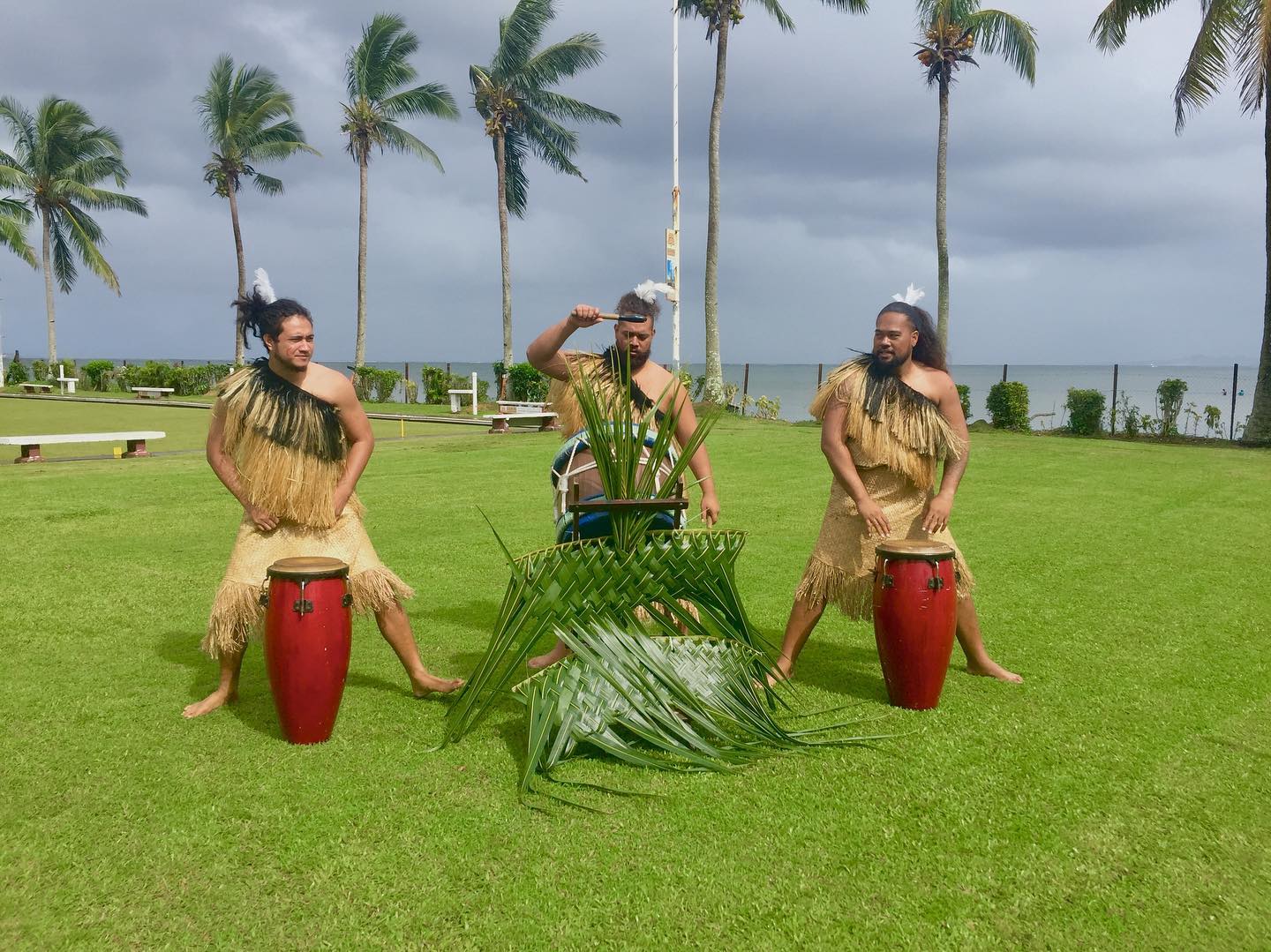Environment
Welcome to the Environment section of the remote internship discovery phase. Here you will find an overview of the Environment in Fiji, current environmental challenges and future goals of protecting the environment in Fiji.
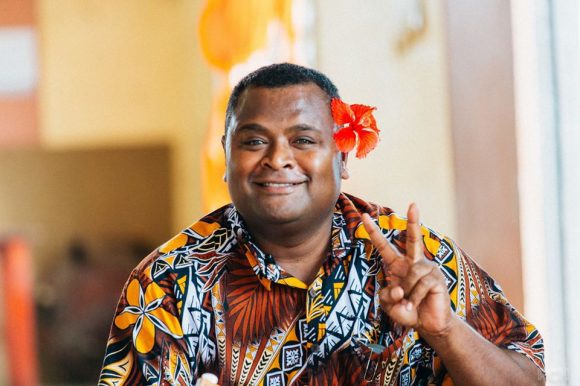
- Module 1: Environment & Climate in Fiji
- Weather Patterns, Biodiversity, Ocean Biodiversity
- Module 2: Government Structures & Initiatives in Fiji
- Commitment to a green future, Government Ministries, Initiatives
- Module 3: Fiji National Development Plan and UN Sustainable Development Goals
- UN Sustainable Goals
- Module 4: Organisations in Fiji
- Conservation International, Mamanuca Environment Society, Nature Fiji , REDD Plus, Wakatu, SPREP, USP, Teitei
- Test your Knowledge!
Module 1: Climate & Environment in Fiji

As a Small Island Developing State, Fiji is severely impacted by both the slow and sudden onsets of climate change induced by global dependence on unsustainable fossil fuels. Rising sea levels engulfing low-lying coastal communities, saltwater intrusion reducing arable land, changing weather patterns impacting food security, and catastrophic cyclones reversing years of development progress while threatening fiscal stability are some of the major climate-induced adversities Fiji faces. These adversities tremendously impact sustainable livelihoods, security and well-being and contribute to an increased incidence of poverty and undue pressure on social services.
Fiji is an archipelago consisting of more than 332 islands dispersed over 1.3 million km2 of the ocean in the South Pacific region. Out of this, 110 islands are permanently inhabited, with diverse landscapes and climate. The islands are characterised by diverse ecosystems including significant areas of natural forest and wide ranges of coastal and marine ecosystems from broad expanses of mangroves to various coral reef formations.
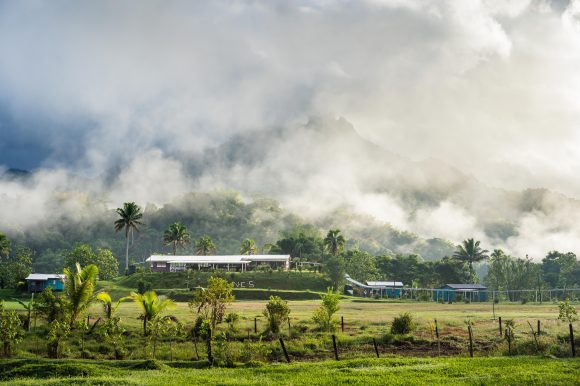
Much of Fiji’s rainfall is associated with the movement of the South Pacific Convergence Zone which is closest to Fiji in the wet season. This band of heavy rainfall is caused by air rising over warm water where winds converge, resulting in thunderstorm activity. It extends across the South Pacific Ocean from the Solomon Islands to east of the Cook Islands with its southern edge usually lying near Fiji.
Rainfall across Fiji can be highly variable. On Fiji’s two main islands, Viti Levu and Vanua Levu, rainfall is strongly influenced by high mountain peaks up to 1300 m. On the south-eastern slopes of Viti Levu, near Suva, the average annual rainfall is about 3000 mm. In contrast, the lowlands on the western side of Viti Levu, near Nadi, are sheltered by the mountains and have an annual average rainfall of 1800 mm with a well-defined dry season favourable to crops such as sugar cane.

Fiji’s climate is also influenced by the trade winds, which blow from the east or south-east. The trade winds bring moisture onshore causing heavy showers in the mountain regions.
Fiji’s climate varies considerably from year to year due to the El Niño- Southern Oscillation. This is a natural climate pattern that occurs across the tropical Pacific Ocean and affects weather around the world. There are two extreme phases of the El Niño- Southern Oscillation: El Niño and La Niña. There is also a neutral phase. In Suva, El Niño events tend to bring dry seasons that are drier and cooler than normal, while La Niña events usually bring wetter than normal conditions.
Under the UNFCCC and IPCC’s categories, Fiji is categorised as a ‘vulnerable’ small island nation under serious threat from various climate change impacts. This includes the rise in sea level and extreme weather events.
Climate change threatens the sustainability and habitability of coastal communities and environments. In 2018, researchers reported that the world’s mean sea level had risen by more than seven centimetres since 1993 due to the expansion of warming ocean waters and melting ice sheets and glaciers. Should atmospheric CO2 concentration continue to rise rapidly, sea levels could rise up to one metre by 2100.
The Government of Fiji has indicated that 830 vulnerable communities require relocation due to risks from climate-related impacts. Of these, 48 communities have been identified as being in urgent need of relocation.
In 2014, residents of the small village of Vunidogoloa in Fiji were left with no choice but to relocate. Their village had been experiencing increasing coastal erosion, saltwater intrusion, and flooding over recent years.
With the support of the Government of Fiji and international agencies, they relocated to higher lands two kilometers from their old home. While some infrastructure still needs to be built, relocation has reduced their exposure to climate risks and protected the community’s future.

Planned relocation in Fiji is a relatively new response to the effects of climate change, and it is only viewed as a last resort. Relocation is a complex process and can be traumatic for those involved. It is not just a case of economics and physical structures, there are a number of complex, non-tangible aspects associated with relocation, which can include challenges to identity, as well as various psychological, social, emotional and cultural damages.
As ocean water warms it expands causing the sea level to rise. Instruments mounted on satellites and tide gauges are used to measure sea level. Satellite data indicate sea level has risen in Fiji by about 6 mm per year since 1993. This is larger than the global average of 2.8–3.6 mm per year. This higher rate of rise may be partly related to natural fluctuations that take place year to year or decade to decade caused by phenomena such as the El Niño-Southern Oscillation. The natural variation in sea level can be seen in Figure 7 which includes the tide gauge record since 1972 and the satellite data since 1993.
Saltwater intrusion has huge impacts on sugar cane farmers. With sugar cane as Fiji’s most prominent export, the longer-term impacts here could be devastating.
Saltwater intrusion from coastal flooding destroys farmland, disrupting the supply of staples in the Fijian economy and forcing communities to migrate to safer ground. The damages sustained to Viti Levu, Fiji’s most populous island, total some $52 million per year, or 4 percent of Fiji’s GDP.
Saltwater intrusion contributed to the relocation of Vunidogoloa.
Watch this video which explores the impacts of climate change at a community level.
Annual maximum and minimum temperatures have increased in both Suva and Nadi since 1950. In Suva, maximum temperatures have increased at a rate of 0.15°C per decade and at Nadi Airport the rate of increase has been 0.18°C per decade. These temperature increases are consistent with the global pattern of warming.
About one-quarter of the carbon dioxide emitted from human activities each year is absorbed by the oceans. As the extra carbon dioxide reacts with seawater it causes the ocean to become slightly more acidic. This impacts the growth of corals and organisms that construct their skeletons from carbonate minerals. These species are critical to the balance of tropical reef ecosystems. Data shows that since the 18th century the level of ocean acidification has been slowly increasing in Fiji’s waters.
Tropical cyclones usually affect Fiji between November and April, and occasionally in October and May in El Niño years. In the 41-year period between 1969 and 2010, 70 tropical cyclones passed within 400 km of Suva, an average of one to two cyclones per season. Over this period, cyclones occurred more frequently in El Niño years.

In February 2016, Cyclone Winston ravaged Fiji, taking the lives of 44 Fijians, destroying homes, uprooting families and inflicting serious damage on the nation’s sugar crop, a foundation of the Fijian economy. The Prime Minister declared a 30-day state of emergency. With winds recorded at 185 miles per hour and gusts up to 200 miles per hour, Cyclone Winston took its place as Fiji’s worst recorded natural disaster and the strongest storm to ever to make landfall in the Southern Hemisphere. Damages from the storm totalled an estimated $1.4 billion, which represents more than a third of Fiji’s GDP.
Read this account of the impacts for a village community in Ra province – https://www.worldbank.org/en/news/feature/2017/11/07/resilience-love-in-action-rebuilding-after-cyclone-winston
More recently, the economic impacts on the pine industry following April’s 2020 cyclone Harold – http://www.forestry.gov.fj/pressdetail.php?id=12
Much of Fiji’s biodiversity is unique to Fiji and many species are not found anywhere else in the world.

- Fifty percent or more of Fiji’s plants and birds are endemic (origionate in Fiji); all 24 palms, 72 of the 76 species of Psychotria, both frogs, over 90% of some insect groups, such as cicadas and marine insects.
- Fiji’s forest covers 52.6% of Fiji’s landmass, estimated at 1.8 million hectares.
- The total number of vascular plants known is approximately 2,600, of which 1,600 are native and 1,000 introduced.
- Current best estimates suggest that Fijian flora consists of 310 pteridophytes and at least 2,225 seed plants.
- Out of a total of 27 reptile species, 12 are endemic.
Fiji also has an extensive and high diversity of marine habitats, including estuaries, seagrass, macro-algal assemblages, protected and exposed soft shores, lagoons, coral reefs and slopes. In particular, the country has the third-largest area of mangrove within the Pacific Island region (517 sq km). These marine habitats support rich biodiversity, a major subsistence and moderate commercial fisheries.

However, despite its subsistence, commercial and conservation value, Fiji’s marine biodiversity is not very well known. So far, researchers have identified 1,198 species of fish, 1,056 marine invertebrates and approximately 1,000 coral reefs in Fiji.
A 10-day study in the Lau group (2017) led to the discovery of 6 new marine species and 50 species unknown to reside in Fiji’s waters! https://www.conservation.org/stories/treasures-of-the-lau-islands
Biodiversity provides a great source of revenue for the economy of the Fiji Islands. Land and marine-based natural resources are harvested for exports to improve Fiji’s foreign reserves for national economic development. In particular, the marine species trade industry contributes to the Gross Domestic Product (GDP), to foreign exchange earnings, and is a direct source of income and livelihood for the local communities. Furthermore, it is a well-known fact that mangroves are very productive ecosystems which sustain the livelihood of coastal villagers and fishermen. Another important sector that relies heavily on natural resources is the tourism sector. As a matter of fact, Fiji’s main attraction is its natural environment and pristine marine waters. Fiji’s gross earnings from tourism for the first quarter of 2009 has been estimated at $167.6 million and is currently the main foreign revenue earner for Fiji.
Show notes:
- Begin the video at 4 minutes 03 seconds.
- Fiji is a haven of unique flora and fauna.
- This video documents the expedition to Vanua Levu, Fiji, undertaken by the Fiji Government, non-government organisations and other stakeholders to conduct a biological rapid assessment of the proposed Delaikoro protected area.
- It explores the unique and varied endemic species of Fiji
- The project is funded by the Global Environment Facility and supported by the Food and Agriculture Organisation of the United Nations, University of the South Pacific and the Ministry of Fisheries and Forestry, Government of Fiji

Fiji’s coral reef ecosystem is the most extensive in the South Pacific and provides fisheries and tourism opportunities that are primary GDP earners and integral to the well-being, culture, and survival of Fijian communities.
The southwest coast of Viti Levu, Fiji’s largest and most populated island, is flanked by the country’s longest fringing reef system and has been affectionately known as the Coral Coast since resort tourism began on its shores in the 1950’s. The wide, shallow lagoons filled with colourful fish and corals just meters beyond the white sandy beaches are the icon that made the Coral Coast famous and over the last 50 years has created a thriving tourism economy that today caters to more than 20% of Fiji’s tourists.
Since time immemorial, these reefs have supported the subsistence needs of the indigenous resource owners. However, the spectacular reef ecosystem that became the icon of the Coral Coast has been degraded by the compounded effects of local impacts from high fishing pressure and coastal development along with climate change stressors threatening the backbone of the local economy and the livelihood and food security of coastal villages and settlements.
Take a look at this video highlighting the impacts of overfishing and the struggles of communities
For information on an initiative exploring coral restoration and ecotourism to increase local participation and introduce financial benefits of resource management efforts, follow this link – https://reefresilience.org/case-studies/fiji-ecological-restoration/
Module 2: Government Structures and Initiatives in Fiji
- Doha Amendment; signatories are to ensure that their greenhouse gases emissions do not exceed the assigned amounts, with a view to reducing their overall emissions at least by 18% below 1990 levels during the second amendment period (2013-2020)
- The first country to ratify the Paris Agreement
- Fiji developed its first National Energy Policy (NEP), which got Cabinet’s approval in 2006.
- Promote the development of indigenous energy sources such as hydropower, geothermal, solar, wind and biomass
- Promote energy efficiency and energy conservation in all sectors
- Strengthen energy security and improve energy supply mix for the country
- This was later reviewed and the 2013 NEP was formulated, led by the Ministry of Energy. The main outcomes were:
- To provide all Fijians with access to affordable and reliable modern energy services with the aim of a 100% electrification rate;
- To establish environmentally sound and sustainable systems for energy production, procurement, transportation, distribution, and end-use; and
- To increase the efficient use of energy and the use of indigenous energy sources to reduce the financial burden of energy imports on Fiji.
- Implementation of the Green Growth Framework (2014); to reduce carbon footprints at all levels
- National Adaptation Framework (2017)
For Fiji as with other countries, the impetus for green growth emanates from the need to better harness natural resources, reduce vulnerability to environmental risks and promote socially inclusive development. Population growth, increasing urbanisation, unsustainable consumption and resource use, infrastructure deficits and increasing frequency of natural disasters due to changing climate heighten the risk of food and energy insecurity and threaten economic and social progress. Left unchecked, natural capital and in particular biodiversity, will steadily decline due to overexploitation of natural resources; invasive species; poor waste management and increasing pollution damage.
This section will explore some of the government schemes, policies and initiatives contributing to a Fiji more resilient to climate change.
Module 3: Fiji National Development Plan and the UN Sustainable Development Goals
“Unless the world acts decisively to begin addressing the greatest challenge of our age, then the Pacific, as we know it, is doomed,”
– Frank Bainimarama, COP23 President and Fijian Prime Minister
How is Fiji affected by Climate Change?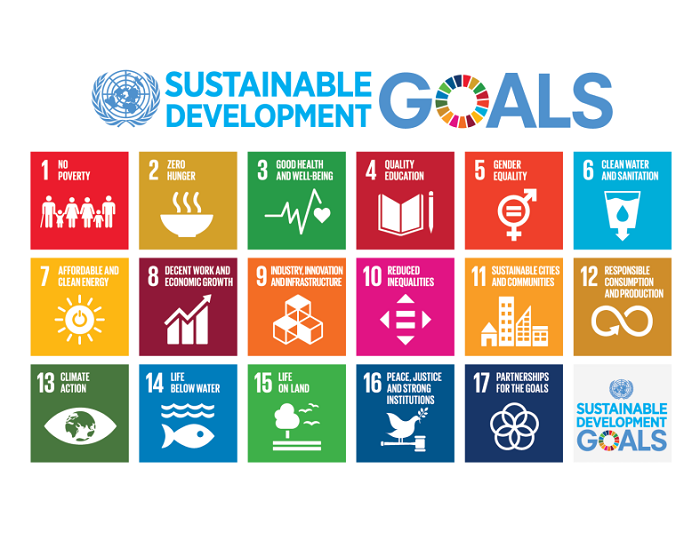
Explore the pdfs below to see how Fiji intends to achieve the UN SDGs, as well as reviewing their current progress in achieving them.
Module 4: Organisations in Fiji
Conservation International is an American non-profit environmental organization headquartered in Arlington, Virginia. Conservation International works to spotlight and secure the critical benefits that nature provides to humanity. Since their inception, we’ve helped to protect more than 6 million square kilometres (2.3 million square miles) of land and sea across more than 70 countries. Currently with offices in 29 countries and 2,000 partners worldwide, our reach is truly global.

Mission
Building upon a strong foundation of science, partnership and field demonstration, Conservation International empowers societies to responsibly and sustainably care for nature, our global biodiversity, for the well-being of humanity.
Vision
We imagine a healthy, prosperous world in which societies are forever committed to caring for and valuing nature, for the long-term benefit of people and all life on Earth.
They are operating a number of projects in Fiji:
-
- Ridge to Reef to Ocean
- Management of the Law Seasape
- Sovi Basin protected area
- Creating protected areas in Tomainiivi and Delaikoro
- Nakauvadra community-based reforestation project

The Mamanuca Environment Society is a charity local to Fiji’s Mamanuca Islands. The Society’s objectives being, an initiative to address environmental issues in the region and specifically work towards the protection and betterment of the region’s marine and terrestrial environment. Recent MES projects include Water Quality Monitoring, Reef Check Surveys, Liquid Waste Management, as well as ongoing education and dialogue with stakeholders at community and commercial levels.
MISSION
- helping conserve the marine and terrestrial biodiversity of the region.
- ensuring the sustainable use of resources to enhance livelihood.
- promoting the need for integrated management by all who visit, live and work in the Mamanuca region for a sustainable tourism and community livelihood.

NatureFiji-MareqetiViti (NFMV) is the membership-based working arm of the Fiji Nature Conservation Trust (FNCT), established in 2007 under the Fiji Charitable Trusts Act.
The mission of FNCT is to conserve and restore Fiji’s biodiversity and its habitat working together with local communities and partners to value and steward their natural resources. These projects are implemented nationally under four pillars:
- Save Species,
- Conserve and Protect Sites and Habitats,
- Empower People and Communities and,
- Build a strong and robust organisation.

Reducing Emissions from Deforestation and Forest Degradation and the role of conservation, sustainable management of forests and forest carbon stock enhancement.
The Fiji National REDD+ Programme came about in 2009. It aims to implement the National REDD+ Policy. The Fiji REDD+ Policy has the overall objective of enhancing the national forest-based carbon balance by:
- Supporting and strengthening initiatives that address the drivers of forest-based carbon emissions
- Encouraging the drivers of forest-based carbon sinks

Wakatu Fiji is about meeting our needs while making sure that the Fiji we grow up in is the Fiji our children can grow old in
Wakatu aim to empower local community members to advocate for good environmental practice. These community members are celebrated as ‘Champions’ and their story and insights shared via social media – Watch videos of locals sharing their insights of preserving the environment here.

SPREP is the regional organisation established by the Governments and Administrations of the Pacific charged with protecting and managing the environment and natural resources of the Pacific. The head office is based in Apia, Samoa with about 100 staff. There is also a SPREP office in Fiji with four staff as well as officers appointed in other Pacific Island Nations.
Mission – Promote cooperation in the Pacific region and provide assistance in order to protect and improve its environment and to ensure sustainable development for present and future generations.
Vision – A resilient Pacific environment, sustaining our livelihoods and natural heritage in harmony with our cultures
Interested in finding out more about the work they do? Follow these links:
- Climate Change Resilience
- Environmental Governance
- Island And Ocean Ecosystem Services
- Waste Management And Pollution Control
- Organisational Goals
At USP the institute of applied sciences (IAS) delivers the University’s expertise and facilities to the independent island countries of the South Pacific Region.
Established in 1977 under the name of Institute of Natural Resources at the Suva campus of USP, IAS has grown to have over 65 full time staff and its own accredited laboratories
This video is an example of a project that USP has been heavily involved with.

The Corals for Conservation program was first initiated in 1999 in Fiji, as ”The Coral Gardens Initiative”. And was created by Teitei founder Austin Bowden-Kerby, The program focuses at restoring degraded coral reef ecosystems by working in partnership with marine resource owners to develop community-based marine management plans and to implement strategies to rectify problems such as over-fishing and coral reef decline.
A unique aspect of the program is that we use hands-on methods of gardening corals as a way of helping individuals and communities better understand and connect with corals and coral reefs, as well as developing a means for sustainable livelihoods through enhanced tourism and sustainable handicraft production.
Listen to the founder in the video below!


